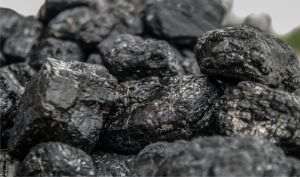The almost complete skeleton of a previously unknown species, Huayracursor jaguensis, has been found in northwest Argentina, at an altitude of 3,000 meters.
A team of Argentine paleontologists has made the remarkable discovery in the Andes Mountains: the skeleton of a dinosaur, which lived about 230 million years ago, at the beginning of the dinosaur era. The announcement was made by Conicet, Argentina's public research institute, and taken over by AFP.
The new species, called Huayracursor jaguensis, was identified in the province of La Rioja, in the northwest of the country, at an altitude of almost 3,000 meters, in an area known for its geological and paleontological richness. The results of the study were published in the prestigious journal Nature, in an article signed by researchers Agustín Martinelli, Ricardo Martínez and Julia Desojo, members of the Conicet team.
"We estimate that Huayracursor jaguensis is between 230 and 225 million years old, which makes it one of the oldest dinosaurs in the world,” said paleontologist Agustín Martinelli, quoted by AFP.
• An ancestor of the long-necked giants
Although it belongs to an evolutionary line that would later give rise to the giant sauropods - long-necked herbivorous dinosaurs such as Brachiosaurus or Diplodocus -, Huayracursor jaguensis was a much smaller and more agile animal. Researchers estimate that an adult specimen measured about two meters long and weighed around 18 kilograms, that is, the size of a large dog.
Its name comes from the combination of the Quechua words "huayra” (wind) and "cursor” (runner), suggesting a fast animal adapted to life in open spaces.
• Exceptional skeleton
The discovery is all the more valuable because the skeleton is remarkably well preserved - a rarity for dinosaurs from the Triassic period. It includes parts of the skull, the entire spine up to the tail, as well as almost intact fore and hind limbs. "Its degree of preservation allows us to better understand the anatomy and early evolution of herbivorous dinosaurs,” the Conicet press release states.
• On the border between geological worlds
The period in which Huayracursor jaguensis lived - the end of the Triassic - is considered a crucial moment in evolution: it was then that the first dinosaurs, mammals and pterosaurs appeared. At that time, the supercontinent Pangaea was still united, and the current region of Argentina was part of a vast tropical plain crossed by rivers and lakes, populated by primitive reptiles. The discovery contributes to clarifying the origin and early diversification of dinosaurs, a chapter still little known in world paleontology. The fossil, now kept in the collections of the Museo de Ciencias Naturales at the Universidad Nacional de La Rioja, will be used as a benchmark for other discoveries in the region. According to the authors, 3D analysis of the bones and comparison with other Triassic species could reveal details about the posture, locomotion and diet of the animal. "This specimen gives us a unique picture of the evolutionary beginnings of herbivorous dinosaurs. It is an important missing piece in the puzzle of their origin,” explained researcher Julia Desojo.
• Argentina, a key territory for paleontology
Argentina has established itself over time as one of the richest paleontological territories in the world. This is where famous discoveries like Eoraptor lunensis, considered the oldest known dinosaur, and Patagotitan mayorum, one of the largest, come from. Huayracursor jaguensis now completes this mosaic, providing a crucial link between early dinosaurs and the giant herbivores that would dominate the planet millions of years later.




























































